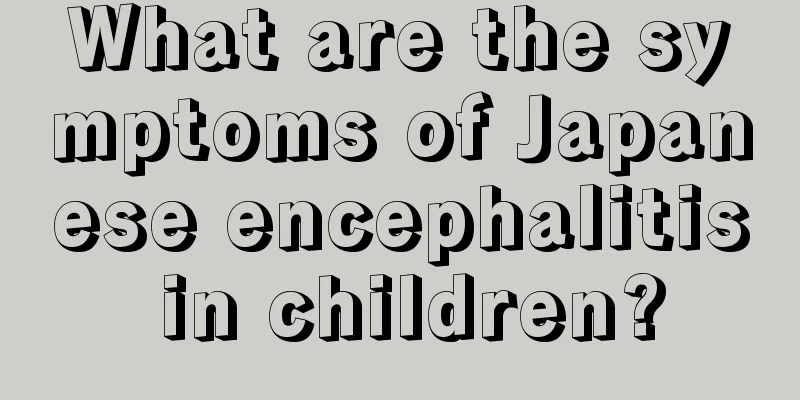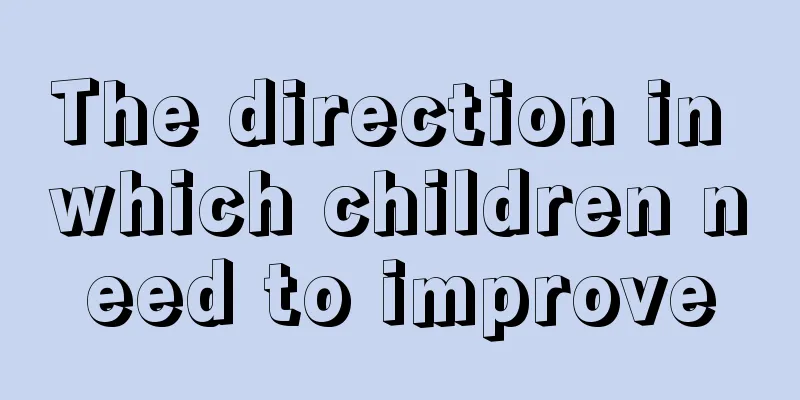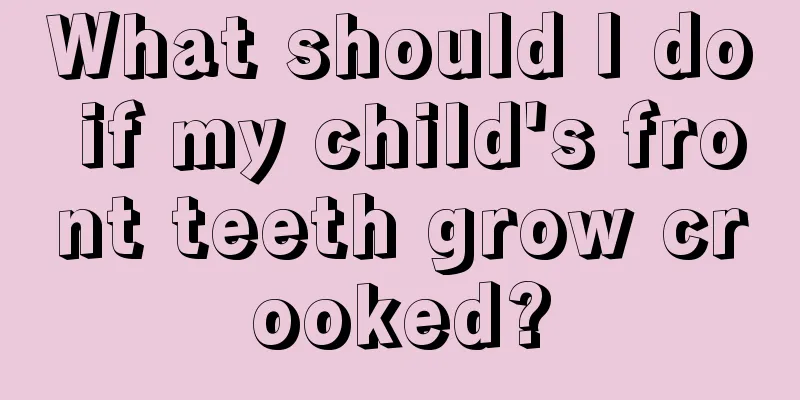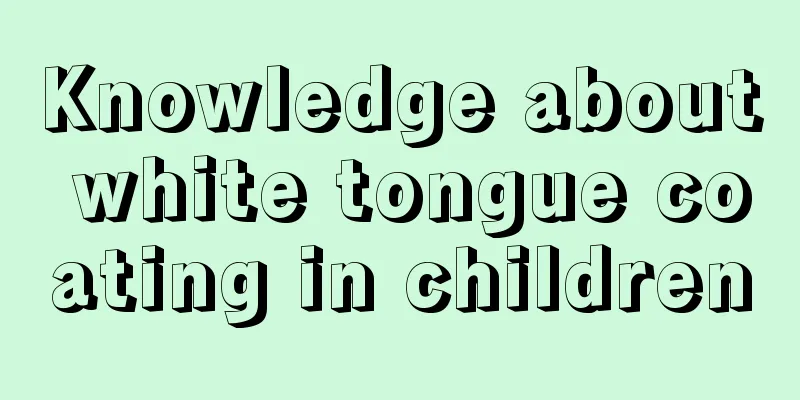What are the symptoms of Japanese encephalitis in children?

|
Japanese encephalitis is actually a virus that causes a disease. It is also a seasonal virus that is more contagious in certain seasons. If a child suffers from Japanese encephalitis, he or she will have a high fever and may also experience nausea, vomiting, headache, etc. Parents must pay more attention to their children's physical condition and seek timely treatment and relief if there are any problems. Characteristics of Japanese encephalitis epidemic: Strict seasonality Except for tropical regions where sporadic cases occur throughout the year, subtropical and temperate regions have strict seasonality, with the vast majority of cases concentrated in July, August and September, accounting for about 80% to 90% of the annual incidence. There are almost no cases in winter and spring. The main reasons are the reproduction of mosquitoes, the development of the virus in the mosquito's body, and the intensity of the mosquito's blood-sucking activity, which are affected by natural conditions such as temperature and rainfall. The epidemic will only occur when the temperature is above 25℃ and the rainfall is appropriate. The peak of the epidemic in central China is in July and August, one month earlier in south China, and one month later in north China. The clinical symptoms of Japanese encephalitis vary in severity. People with mild symptoms generally have a body temperature not exceeding 39°C, and experience general discomfort, mild headache, nausea and vomiting, clear consciousness or drowsiness. They recover in about a week and generally have no sequelae. Severe cases show chills, persistent high fever of 39-40℃ or above, which lasts for 1-2 weeks. The higher the temperature, the more serious the condition; headache, vomiting, and neck stiffness; frequent convulsions, which last from a few minutes to tens of minutes; confusion, which begins with increased sleep, gradually develops into drowsiness that is difficult to awaken, and finally develops into coma; in extremely serious cases, respiratory failure may occur, manifested as shallow breathing, irregular breathing rate, sighing breathing, respiratory apnea, and in severe cases, respiratory arrest. Respiratory failure is the main cause of death from Japanese encephalitis. After 8-10 days from the onset of the disease, the patient begins to enter the recovery period, the body temperature gradually drops to normal, and the mental disorder gradually recovers. During the recovery period, critically ill patients may experience low fever, sweating, aphasia, slow reaction, abnormal mental and behavioral characteristics, dysphagia, paralysis, involuntary limb movements, and epileptic seizures. Most recovery symptoms occur within half a year, but a few may leave sequelae such as paralysis, dementia, aphasia, and epilepsy. Characteristics of Japanese encephalitis epidemic: Widespread prevalence of epidemic areas Japanese encephalitis is prevalent in a wide range of areas, from Hokkaido, Japan and the former Soviet Union's Far East in the north to Indonesia and Java in the south, from the Mariana Islands in the east to India and Sri Lanka in the west. my country is a temperate and subtropical region. Except for remote areas and plateau areas in the northeast and northwest, Japanese encephalitis occurs or is prevalent to varying degrees. However, the incidence rate is higher in rural areas than in cities, and higher in mountainous areas than in coastal areas. Epidemic characteristics of Japanese encephalitis: changes in the age structure of onset In the past, the disease mainly occurred in children under 10 years old, accounting for more than 80% of the total number of patients. This is because most adults were latently infected and had already acquired solid immunity. In recent years, the age structure of the disease has tended to shift from children to adults and the elderly. The incidence of the disease in adults or the elderly has increased relatively, and the mortality rate is also high. This may be related to the widespread vaccination of children, but the overall incidence rate in the country has dropped significantly, changing the past prevalent disease pattern. Epidemic characteristics of Japanese encephalitis: highly sporadic forms of disease Because there are more latent infections and fewer clinical cases, the disease is highly sporadic and it is rare for two patients to occur in the same family at the same time. The ratio of overt infection to latent infection is 1:300 to 1:1000. |
<<: What are the symptoms of pigeon breast disease in children
>>: How to solve the problem of anal redness in children
Recommend
What is the height and weight of a six-year-old child?
We all know that the standards of children's ...
What are the recipes for reducing internal heat in spring babies?
In spring, we should make reasonable arrangements...
How to deal with blisters on children's burns
Children are playful by nature. If parents are ca...
What are the reasons why children have poor sleep?
The baby's poor sleep is a headache for many ...
What is the reason for a baby's small fontanelle?
The fontanelle is the gap in the baby's skull...
Side effects of root canal treatment in children
Children are in a stage of tooth development. If ...
What should I do if my four-month-old baby has dry and peeling skin in winter?
Winter is coming and the weather is getting colde...
What are the effects of a baby having a fever and convulsions?
Children often have fever and get sick. Recently,...
What should primary school students eat to nourish their brains?
Children are in a critical period of growth and d...
What should a nine-month-old baby with anemia eat?
Children are the apple of every parent’s eye. If ...
How to regulate children’s fever in the morning and evening?
Many children are very susceptible to illness bec...
What are the measures to relieve baby’s constipation and smelly farts?
The baby's digestive function is very weak. I...
Why does the white of my child's eyes turn blue?
Many mothers will find that their children have b...
What kind of fish is the best for children to eat?
Our daily life experience tells us that eating mo...
What to do if your child has anorexia
Many children suffer from picky eating and anorex...









